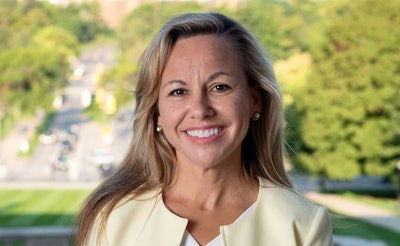As a first-generation college student and immigrant, I didn’t always feel that I belonged in higher education. But I had faculty and mentor support that empowered me to become the best version of myself in a new and different environment. Throughout my career in academia, three things that have always been at the forefront in my thinking are access to higher education, social mobility and social justice.
Now as president of St. Edward’s University, a private, Catholic liberal arts college in Austin, Texas, I want to offer that transformative education to others. But the dream of college has become further out of reach for low- and moderate-income students due to rising costs and the economic strain of the pandemic.
We need to urge our lawmakers to double the Pell grant to ensure access and affordability across higher education. The Pell grant program, which will mark its 50th anniversary this June, distributes need-based federal funding to nearly 7 million students each year, mainly undergraduate students from low-income families earning $50,000 or less. Fifty years ago, the Pell grant covered more than three-quarters of the cost of attending a four-year public college, but it now covers less than one-third of those costs.  Dr. Montserrat Fuentes
Dr. Montserrat Fuentes
As of January, legislators have proposed various increases to the Pell Grant program. President Biden recently proposed to increase the Pell Grant by $2,000 and it can be expected that it will be in his (FY) 2023 budget request.
There is also a $400 increase in the proposed fiscal year (FY) 2022 appropriations bill. Additionally, there is a proposed $550 increase to Pell for four years included in the current version of the Build Back Better Bill, as well as a proposal in the federal Pell Grant Preservation and Expansion Act that would more than double the maximum annual Pell Grant award from $6,495 to $13,000 over the next five years and expand access to Dreamers.
The Pell grant increase in the appropriations bill is the most likely proposal to succeed and would provide a needed one-time boost. Our low-income students deserve a much stronger investment that can only be achieved through doubling the Pell maximum grant.
As a Hispanic Serving Institution and Minority Serving Institution, our Fall 2021 freshmen students are 43% Pell-eligible and 58% Hispanic, we know that the COVID-19 pandemic has disproportionately affected low-income students and students of color, exacerbating their financial struggles. Overall, recent enrollment trends have shown these high-need students are opting out of college after high school, which we know will likely mean no college for many of these students.
We need our lawmakers to act now and make sure that the proven Pell program will continue to be an effective tool in increasing accessibility, removing barriers to college completion and reducing student debt. Higher education is still the most consistently reliable way to break that poverty cycle. And our country needs an educated citizenry to address the growing complexity of social and political problems.
According to a recent analysis of the Congressional proposals from The Gender Equity Policy Institute, doubling Pell would decrease debt for all students pursuing bachelor’s degrees by about 79 percent. It would be particularly beneficial for students of color, helping to reduce debt for Black (80 percent decline), Latino (83 percent decline), and Native American (85 percent decline) students.
Doubling the Pell could also help the approximately 11.7 million eligible Pell recipients who have completed some credits, but have not received their degrees, go back to college to complete their degrees. One of the advantages of the Pell program is that the grants are mobile, meaning students can start out at a community college, earn an associate’s degree and then carry the grant to a 4-year degree-granting institution. Some of our most successful students and alumni came in as transfer students from community colleges.
Doubling the Pell could put more Pell-eligible students back on the college track, retain students who are considering dropping out, and amplify programs that will ensure their success.
Those of us with a college degree and already in a solid financial situation should still care about more Pell eligible students going to college. Investments in the Pell grant program will aid our nation in the long-term economic recovery in the wake of the COVID-19 pandemic and keep our state and country from losing ground in an ever-competitive global economy.
My own personal and transformative higher education experiences have resulted in so many wonderful opportunities in my life. It is the reason why I and others in our field strive for equal opportunity for higher education. What better way to make Pell-eligible students feel like they too belong in college and can succeed in attaining their degree, then to make sure they can rely on adequate funding that will make it possible.
Dr. Montserrat Fuentes, is president of St. Edward’s University in Austin, Texas.
















